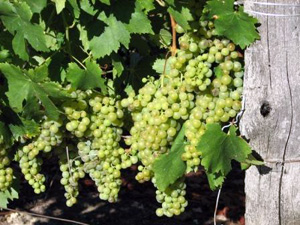 You heard me. This wine, which is made from the muscat grape in a
frizzante-style (mildly bubbly) in the Piedmont region of Italy, is one you should get
to know. Even though I drink a lot of wine – from sparkling
to port – it's easy to forget about Moscato. Mostly because I don't
often get the opportunity to drink it. I'm the only person I know who
loves dessert wine, so it's hard to justify opening a bottle to drink
all by myself. I have, it's just not something one should make a habit
of. Usually I have to quench my cravings for this delicate, fizzy
confection when I'm out to dinner. While everyone else digs into the
chocolate cake or bread pudding, I satisfy my sweet tooth by sipping.
All the pleasure, none of the fat.
You heard me. This wine, which is made from the muscat grape in a
frizzante-style (mildly bubbly) in the Piedmont region of Italy, is one you should get
to know. Even though I drink a lot of wine – from sparkling
to port – it's easy to forget about Moscato. Mostly because I don't
often get the opportunity to drink it. I'm the only person I know who
loves dessert wine, so it's hard to justify opening a bottle to drink
all by myself. I have, it's just not something one should make a habit
of. Usually I have to quench my cravings for this delicate, fizzy
confection when I'm out to dinner. While everyone else digs into the
chocolate cake or bread pudding, I satisfy my sweet tooth by sipping.
All the pleasure, none of the fat.
Yes, muscat grapes make super-ripe, overtly-fruity, wildly-perfumed
wines, but that's why they are so good with dessert. This family of
grapes is grown all over the world and is one of the oldest recorded
varietals, yet it fails to get any respect. Sure there are bad versions
out there, but that's true with every grape. What I fail to understand
is the complaints that it's too sweet…even versions that are fermented
dry. A criticism I find fairly hollow coming from the mouths of people
who drink soda, juice and sugar-laden caramel frappuccinos.
Food, Wine, Good (and Evil) Spirits
Food, Wine, Good (and Evil) Spirits
Clay vs. The Drought
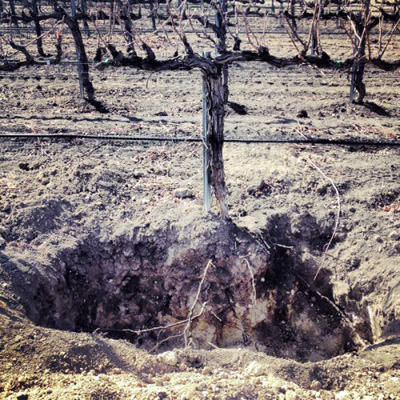 My father's singular obsession with noble limestone permeates every discussion of our wines. He purchased our vineyard land only once he discovered it lies on a 300 foot deep slab of the white, porous rock. Because we are so proud of Limestone’s mineral, high acid effect on the wines, we seldom discuss the thin layer of dirt above.
My father's singular obsession with noble limestone permeates every discussion of our wines. He purchased our vineyard land only once he discovered it lies on a 300 foot deep slab of the white, porous rock. Because we are so proud of Limestone’s mineral, high acid effect on the wines, we seldom discuss the thin layer of dirt above.
The Stolpman estate vineyard's clay topsoil is light gray when dry and becomes a sticky mud when wet. Many 2×4 cars have fallen victim to the wet clay, even on our hard-packed roads. Boots become several pounds heavier with mud stuck like bricks in the treads.
That’s the very beauty of clay in our perpetual California drought: it retains moisture. This year, as we look at the driest winter thus far in our vineyard’s history; we are thankful to have clay. As we drip water on the ground through our irrigation hoses, we mimic normal rainfall, allowing the clay to become saturated. Like a year of normal rain fall, when we hope to get 12 inches, we won’t irrigate after set. Set describes the transition when the vines’ tiny flowers become “.” sized grapes.
By cutting water at set, we are ensuring that the plant will still have to fight through the summer to ripen tiny concentrated grapes, undiluted by irrigation. In a drought year like 2014, this is our new definition of dry farming.
In Pursuit of Balance - A New Wine Movement
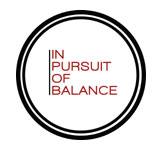 I love California wine and I'm not afraid to admit it. More than any other region and, through extensive wine classes, I've tasted them all. And I'm tired of people (OK, mostly other writers) bashing the wines from my adopted state for being what they mostly can't help being - big, bold and some claim overly-alcoholic. We have sun here, a lot of it, and it shows in the wines we make. That's called "terroir" people. If you don't like it, there are now hundreds of thousands of choices from almost every country in the world. Take your pick. Stop complaining and drink what you like.
I love California wine and I'm not afraid to admit it. More than any other region and, through extensive wine classes, I've tasted them all. And I'm tired of people (OK, mostly other writers) bashing the wines from my adopted state for being what they mostly can't help being - big, bold and some claim overly-alcoholic. We have sun here, a lot of it, and it shows in the wines we make. That's called "terroir" people. If you don't like it, there are now hundreds of thousands of choices from almost every country in the world. Take your pick. Stop complaining and drink what you like.
Personally, I like to taste more fruit than dirt in my glass so I'm perfectly content right where I am. Can I agree that California produces a preponderance of wines that show little character and that bludgeon your taste buds with too much of everything? Sure. On the flip side, low alcohol wines can be thin, insipid and too acidic all in the cause of being opposite. Having travelled up and down the state, I know there are many, many, many winemakers out there trying to make the best wines from their land (or purchased grapes) that focus on all the right things: balance, fruit and complexity.
That's all I ask for. Depth of character. Whether light-bodied or full-throttled, taste like something other than grape juice and oak. Subtle doesn't have to mean boring and intensity isn't always overwhelming. Balance is the key. It certainly begins in the vineyard with a myriad of farming decisions, but actions in the winery also play an important role. When the right winemaker finds the right grapes, it is magic in the glass. This idea became In Pursuit of Balance, a movement created three years ago by Jasmine Hirsch of Hirsch Vineyards and Rajat Parr of Michael Mina and Sandhi Wines to support wineries striving to craft balanced Pinot Noir and Chardonnay in California. I'm not sure this concept really needs a "movement", but I found a lot to love at their recent tasting in Los Angeles.
Jordan Estate Tour & Tasting
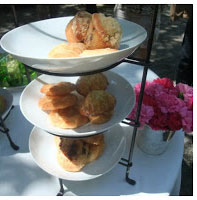 If I ask you about your favorite wine, you will probably tell me where you enjoyed it and with whom. Perhaps it was at a picnic on a perfectly sunny day, or on a date with the love of your life. Maybe it was at the winery where the wine was made, but probably not. My point is this, wine, like food, is enjoyed in context. It can be very hard for a winery to create a truly memorable experience with wine, but one winery is giving it a shot.
If I ask you about your favorite wine, you will probably tell me where you enjoyed it and with whom. Perhaps it was at a picnic on a perfectly sunny day, or on a date with the love of your life. Maybe it was at the winery where the wine was made, but probably not. My point is this, wine, like food, is enjoyed in context. It can be very hard for a winery to create a truly memorable experience with wine, but one winery is giving it a shot.
I'm lucky to have gotten to spend some time at the Jordan winery and to enjoy firsthand the food, wine and hospitality that they are about. I've stayed on their property, had lunch and a full tasting, attended one of their famous halloween parties and gotten to know their talented and creative chef and his wife who heads up hospitality and events. Those experiences have been limited to a privileged few, up till now. And while Jordan uses as many means possible to share the winery experience and lifestyle virtually including photography, videos and even a blog, nothing takes the place of being there.
The soon-to-be-launched Jordan Winery Estate Tour & Tasting is best described as a fully immersive affair. You start at the winery for a little continental breakfast with fresh fruit grown on the property plus fresh baked goods.
Confessions of a Champagne Snob
From the North Coast Journal
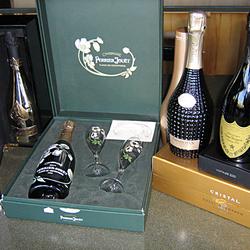 It happens every year about this time, in magazines and newspapers,
online: an outpouring of effervescent enthusiasm for holiday sparkling
wine bargains. "The best of West Coast bubbly has rarely been better,"
trumpets San Francisco Chronicle Magazine. The online wine merchant www.novusvinum.com features the "Top 20 American Sparkling Wines," from a modest $19 for Francis Coppola 2008 Sofia Blanc de Blancs to a staggering $100 for Schramsberg 2002 J. Schram. Words like "festive" and "elegant" promise a transcendental experience.
It happens every year about this time, in magazines and newspapers,
online: an outpouring of effervescent enthusiasm for holiday sparkling
wine bargains. "The best of West Coast bubbly has rarely been better,"
trumpets San Francisco Chronicle Magazine. The online wine merchant www.novusvinum.com features the "Top 20 American Sparkling Wines," from a modest $19 for Francis Coppola 2008 Sofia Blanc de Blancs to a staggering $100 for Schramsberg 2002 J. Schram. Words like "festive" and "elegant" promise a transcendental experience.
They lie. Well, they pretty much have to lie. No one would be long in business selling wine or print ads if they told the truth: American sparkling wine at its best is not in the same class as even the least expensive imports from Champagne. The fact is, it may never be.
The world of cuisine is fertile ground for happy, often accidental inventions: the 18th century discovery that oil and vinegar could, by careful blending with egg yolk, be emulsified into Sauce Mayonnaise. Peking Duck: an ancient dish, eaten by wealthy Chinese, consisting of just the crisp skin of a fattened duck, slowly roasted to a glossy brown in a long process taking a whole day. Distilled spirits, a byproduct of 8th century alchemy that produced what an Arabic poet described as, "a wine that has the color of rain-water but is as hot inside the ribs as a burning firebrand."
But the ultimate adventure may have been the one that produced gold from straw.
More Articles ...
Welcome to the new One for the Table ...
Our Home Page will be different each time you arrive.
We're sure you'll find something to pique your interest...
